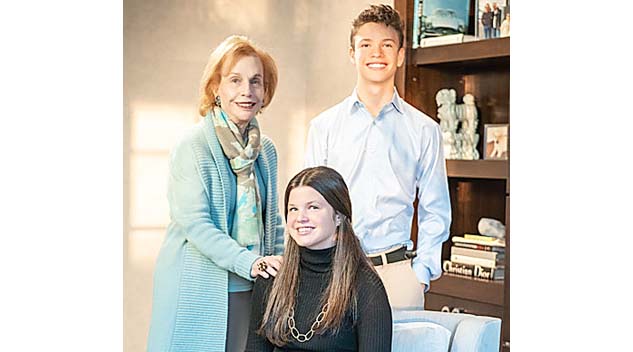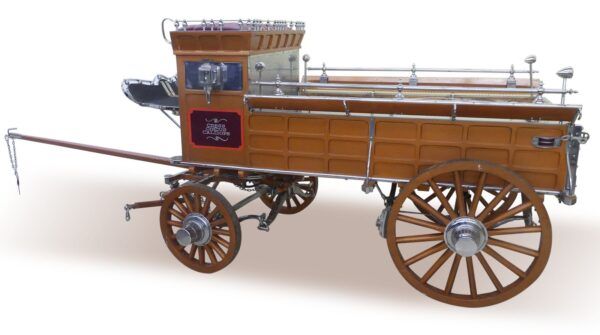#Susan #Jaffe #Tane #Natalie #Spencer #Flaxman #Antiques #Arts #Weekly

From left: Susan Jaffe Tane, Natalie & Spencer Flaxman.
Susan Jaffe Tane and her teenage grandchildren, Natalie Flaxman and Spencer Flaxman, are co-curators of the exhibition, “Presidents and Their Books: What They Read and What They Wrote,” on view at The Grolier Club through November 11. The exhibition contains books from presidents’ personal libraries, as well as books signed and inscribed by them. Tane has been collecting books since the 1980s and recently brought Natalie and Spencer into the fold, so much so that they are the youngest-ever curators of a Grolier Club exhibition. We corresponded with the family team via email.
Susan, when did you decide to focus on collecting rare books?
SJT: I didn’t start out collecting rare books, but I’ve always viewed collecting as fun. Growing up, I always collected all sorts of things as the whim hit. When I was young it was seashells and postcards from exotic places. As I got older, it was swizzle sticks and matchbooks from fine (or not so fine) restaurants and nightclubs.
I’ve also always been a book lover, but I might never have thought to combine these passions, if not for a chance encounter at the 1987 New York Antiques Show at the Seventh Regiment Armory. While browsing the dealers’ booths, I spotted a first edition of The Raven and Other Poems. I couldn’t believe it. It was more than simply fascinating: it was compelling. I had to have it. I never knew that a layperson such as myself could own a valuable first edition. I thought they were all relegated to libraries and museums, the keepers of our literary treasures. It was the best and most exciting thing I had ever seen, and as I fondled those leather covers, I knew I had to own it.
The Raven sat for a while by itself on a very empty bookshelf. It looked lost and alone. My compulsive nature could not let this book stand by itself without any friends to accompany it. That’s when I decided to build a collection, first of Edgar Allan Poe, and then later Mark Twain, Herman Melville and Walt Whitman.

The Gift: A Christmas and New Year’s Present for 1836, Edgar Allan Poe, Philadelphia: Carey & Hart, 1835. Robert Lorenzon photo. This book is Franklin D. Roosevelt’s personal copy of the Nineteenth Century gift book that contains “Ms. Found in a Bottle,” a story by Edgar Allan Poe. He inherited the book from his grandmother and kept it in his library at Hyde Park.
My first acquisition of a book from a presidential library was part of my Edgar Allan Poe collection. The Gift: A Christmas and New Year’s Present for 1843, containing the first printing of “The Pit and the Pendulum,” came from the library of Franklin Delano Roosevelt, with his signature and inscription on the first blank.
Spurred on by this continued fascination, I was delighted to be offered Thomas Jefferson’s copy of Homer’s Iliad with his ownership inscription and marks in the margins. I had thought that the Library of Congress had all of his books, so to own one myself was quite the coup. And then I was offered an inscribed presentation copy of the Lincoln-Douglas Debates from the celebrated campaign of 1858 in Illinois. And as every collector knows, three books are more than enough to start a collection! My “presidential collection” currently includes at least one book from all of the presidents, and in many cases two or three books.

Inaugural Addresses of the Presidents of the United States of America from George Washington 1789 to John F. Kennedy 1961. Washington, DC: United States Government Printing Office, 1961. Robert Lorenzon photo. John F. Kennedy planned to give this copy of the Inaugural Addresses of the Presidents of the United States to Dean Rusk, his Secretary of State. Jackie Kennedy inscribed the book on his behalf and gave it to Dean Rusk a few weeks after her husband’s death.
How did the idea for an exhibition come to be?
SJT: They say the collecting gene skips a generation. My sons, Stephen and Robert, unfortunately couldn’t care less about my Edgar Allan Poe books or Walt Whitman manuscripts. But ever resourceful, I turned to my grandchildren, Natalie and Spencer, who showed an early interest.
SF: Starting when we were young, my Nana would always play president games with my sister and me. We tried to memorize the names of the presidents in order using cards and would recite them around the family dinner table. This sparked my interest in learning about history, especially American history. More recently, I became a sports fanatic, but when my Nana first brought up the idea of putting on an exhibition of presidents’ books together, my memories came rushing back. I knew it would be a lot of work, but I was up for the challenge.
SJT: I had no doubt that Natalie and Spencer would rise to the task, but I knew we’d need some assistance getting started — so I reached out to friends and colleagues for help.
NF: We spent several years preparing for the exhibition, and we consulted with several experts during that time. To start, we spent time looking at the books in my grandmother’s collection and learning more about their provenance from her librarians. Then, we visited our book designer Jerry Kelly to learn more about printing history and how our catalog would be made, and we also met with photographer Robert Lorenzon to plan how we wanted our catalog to look. After many meetings and lots of hard work, it all started to come together, and we’re really proud of the final result.

Political Debates Between Hon. Abraham Lincoln and Hon. Stephen A. Douglas in the Celebrated Campaign of 1858, in Illinois. Abraham Lincoln and Stephen A. Douglas. Columbus: Follet, Foster & Co, 1860. Robert Lorenzon photo. Political Debates begins with Abraham Lincoln’s “House Divided” speech, in which he says that if the country continues to fight, our nation will not survive. In addition, this book collects Lincoln’s debates covering the key topics of the day, including slavery and abolition, the Dred Scott case, popular sovereignty, and the future of the country. Jesse Lynch, to whom Lincoln inscribed this copy, was associated with Lincoln when he was a US representative.
What was the selection process for the books presented in the exhibition?
SF: We knew from the beginning that we wanted to show one book per president, and we wanted to treat each president equally. Sometimes, it was an obvious choice — we knew we wanted to include the books that are inscribed to us, for example, and stand-out pieces like the copy of Inaugural Addresses that Jackie Kennedy inscribed to Dean Rusk right after her husband’s assassination were no-brainers.
NF: The signed copy of the Lincoln-Douglas Debates was also something we didn’t need to think twice about including. I learned about Lincoln’s famous “House Divided” speech that he gave during these debates in school, and it was really inspiring for me to see it printed in this book from 1860. My grandmother emphasized that a good exhibition always “tells a story,” so we chose the books that we felt did exactly that. As we learned, curators always have to make the difficult choice to leave out a few items that they really want to show. Luckily, though, we had some extra room in the gallery, so we were able to include some of the books that didn’t make it into the catalog in the exhibition.
Out of the collection, which books were you surprised to learn a president had owned, and why?
SJT: One of the most surprising stories — and definitely the sweetest — comes from George H.W. Bush’s library: Gentle Julia by Booth Tarkington. Most of the books in the exhibition that are inscribed to modern presidents are from either during or after they held office. George Bush received this book when he was 10 years old as a gift from Tarkington (who was a family friend), and he kept it in his library for many years.
SF: I was most surprised by how small some of the books from Thomas Jefferson’s library are. I didn’t know he could read and speak so many languages, and I can’t believe how tiny his handwritten notes are!

Gentle Julia. Booth Tarkington. Garden City, N.Y.: Doubleday, Doran & Company, Inc, 1933. Robert Lorenzon photo. This book was given to George H.W. Bush when he was 10 years old by its author, Booth Tarkington. Their families were friends who both had homes in Kennebunkport, Maine.
Natalie and Spencer, have either of you started your own collections on a certain subject, or of a different category?
SF: We never collected much growing up, but we knew that my grandmother collected rare books and enjoyed going through her library in her New York City apartment. She must have noticed this, because before we knew it, we received our very own rare books: copies of My Life by Bill Clinton inscribed to my sister and me.
NF: My grandmother later gifted us inscribed copies of George W. Bush’s Portraits of Courage, and since working on this exhibition, I bought a signed copy of Kamala Harris’s book Superheroes are Everywhere… So, I guess you could say I have a collection, now! I have found joy in bonding with my grandmother on this shared passion, and I hope we continue to build our libraries together.

My Life by Bill Clinton (2004), inscribed to Natalie and Spencer Flaxman. Robert Lorenzon photo.
Susan, what is the next field of study and collecting for you?
SJT: My next area of collecting has already happened! I am currently working on an exhibition on Mark Twain and humor that will open at the Grolier Club in February 2025 — mark your calendars, and don’t forget to come see it!
Natalie and Spencer, do either of you have an interest in pursuing a career in rare books?
NF: We’re both still deciding where and what we want to study, but I’m currently thinking about majoring in finance or psychology, and Spencer is looking at sports or business. Wherever we end up studying, though, I know one of the first stops we make on our college campus will be to check out the library.
[For more information on the exhibition, www.grolierclub.omeka.net/exhibits/show/presidents-books]
—Z.G. Burnett




